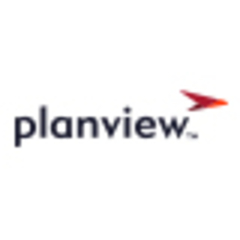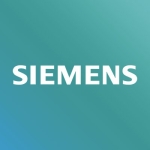What is our primary use case?
In our organization, a lot of individuals have been using it to plan out their work or keep track. Some people here are using it for things they know are coming but haven't started. They are using it to track the progress of things going on in their department and then be able to see and share it with their staff to give visibility.
We are using its most current version because it is accessed through the web. It is SaaS-based.
How has it helped my organization?
The ability to see the progress is important for us because there is so much going on, and it provides a way to have a quick glance to see how busy people are and how much they have going on. From having a whiteboard or sticky notes in their office that only they could see, people now have been able to go to a place where anybody can see it. Moving those things that were traditionally on a physical wall into a shareable place is a big benefit.
It is much easier for a coworker to see and know what people are working on in her department because she can assign them to those cards. So, she can go back and see at a glance, which makes things a lot easier when decisions have to be made about other things that have come to fruition or are going to start eventually.
In terms of its effect on our ability to get the answers that we need about a given card's status, especially when comparing how it was before using LeanKit, we didn't have anything previously. So, it must have been a lot harder to dig for that information. Now, if somebody is working on a project, that person on their own can go and view it versus having to maybe ask their boss what is the status or find some Excel report that was sent in email.
What is most valuable?
People found the ability to set up different lanes and the ability to see where they're within the progress most valuable. They can use different colored cards or sticky notes, and then they can separate out which cards belong to a department or the initiative they're working on. They can filter who's working on it, and I've got good feedback about that.
Board Layout Editor is very flexible and user-friendly. We can create with minimal training. We had staff that was able to go in and easily get going themselves. They've found it really user-friendly.
What needs improvement?
It is a pretty good product. It is really hard to think of things that I'd want to be improved. Sometimes, we use it for project management lessons learned. So, we have three columns, such as Could be Improved, Keep Doing, and Works Really Well. It would be helpful if there was a template set up for something like that because we code different cards based on the category. For example, if something belongs to the Could be Improved category, we may have those cards as yellow, but then I have to change the color of them and put a header. It is not as smooth, but it still works fine. To be honest, I don't have a lot of complaints about it.
Buyer's Guide
Planview AgilePlace
April 2025
Learn what your peers think about Planview AgilePlace. Get advice and tips from experienced pros sharing their opinions. Updated: April 2025.
848,396 professionals have used our research since 2012.
For how long have I used the solution?
We've been using it for about four months.
What do I think about the stability of the solution?
Its stability is good. I haven't run into any issues.
What do I think about the scalability of the solution?
I think it can scale. If you have a bigger team, you just have more users to get in there. There doesn't seem to be any limit in terms of the number of boards you could use. People can create pretty easily and connect with other people. I don't see any issues there.
We have probably 10 people using it, and we definitely plan to use it more often. We want to get to a place where we connect it to PPM Pro. We have PPM Pro as well, and I just need to go through the process. After that, there would be more push to let people know that they can use it and decide if they want to work in PPM Pro or in Projectplace.
How are customer service and support?
I use them all the time for many different things. My experience with them has been really good. I haven't had any issues. I always got the help that I needed and within a good and reasonable amount of time.
Which solution did I use previously and why did I switch?
We didn't have anything quite like this. We do have Projectplace from Planview as well, which is definitely different. Projectplace can accomplish a lot of the same things, but people tend to feel more comfortable with the whole sticky note presentation type of thing, or they're used to doing that, or they just like the colors. For some people, it definitely went from zero to 100, where they felt that they were doing way more than what they ever expected to do with it.
How was the initial setup?
It was straightforward. It was a piece of cake. It was pretty much knowing how to log in. I may have watched a video. There are good board templates that you can look at to get an idea of how it works. After that, you just need to set up other people. The funny thing is a lot of people were like, "One more thing. I don't have time for this. I don't want to go to one more place." When they started using it, they were like, "Oh, this is so much better." They didn't have anything like this.
We didn't really need any implementation strategy because, for the most part, we were really at the point where we just said, "Hey, there is this tool. If you want to use it, feel free." We haven't really pushed it and said, "Okay, everybody has to use this, and we're going to use it to manage this project." However, anytime we've set somebody up, it has been really easy to get somebody started, and people, in general, are pretty excited about it.
What about the implementation team?
We didn't need any integrator or any staff from Planview to help us with its deployment. It was that simple. There were sufficient videos to watch if we had any questions or needed any help.
In terms of maintenance, it doesn't really require a lot. I'm the admin, and basically, all I really had to do was do a little bit of training for people. The only other thing was just to set them up as users. It is pretty simple and low maintenance, for sure.
What was our ROI?
The way our licensing is structured makes us more likely to stay or not want to go and look at other options. The overall value proposition with Planview is good. The more remote we've had to work, having these things that anybody can access is important.
What's my experience with pricing, setup cost, and licensing?
I don't know what it would be on its own. It was basically included with what we were already paying or using. So, it was a no-brainer. It wasn't like we had to sell the company on making a purchase or anything like that. There weren't any costs that came in after implementing it.
Which other solutions did I evaluate?
We didn't evaluate other options because the way our license was structured for our other software allowed us to use this as well. So, it was like, "Oh, we now have access to this. Cool."
What other advice do I have?
The biggest lesson that I've learned from using this solution is that once you are tracking everything, there is a lot more work going on than you think. It's easy to forget that things are going on, or you are going to do this task or that task.
My advice would be that if you're going to use it, you really need to be going in there on a routine basis, and that's probably daily. If you don't go into it tomorrow and you also don't go the next day, then by the time you come back to it, you would be like, "Oh! I was supposed to do that," or, "I forgot about all these other things to do," or, "I've been doing these things, but I haven't been tracking them. Now I have to go add these things up in the last three days." So, you really have to get a routine of using it to get the most out of it.
I don't use its board and card hierarchies, but I know other people have connected cards across different boards. I don't know whether they affect the speed, but it would be less likely for things to fall through the cracks. So, it probably helps in one way because it is always there, and you're always seeing it. So, things don't fall behind.
I haven't used LeanKit's Card Health feature, but I am familiar with it. We are definitely going to explore it in the future. Similarly, we haven't used it for reporting. There might be reporting capabilities, but based on my knowledge, there are not a lot of reporting capabilities. I haven't used it a lot, and I don't think anybody else has. It is relatively new, and we are at a point where we are just getting people to use it.
It has probably not reduced our cycle times. We used other things to manage projects. In some way, it is helpful because things are always there visually, and you can see them in front of you. So, if you're checking it, you're probably much more likely to get things done sooner because they are visually there.
I would rate Planview LeanKit a nine out of 10.
Disclosure: I am a real user, and this review is based on my own experience and opinions.








